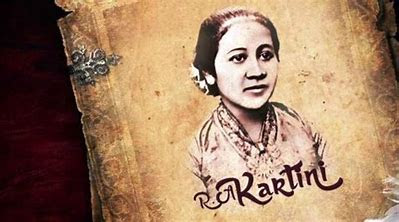Watching horror movies is never my cup of tea.  My reason is simple: I watch movies to get entertainment and not to get frightened.
My reason is simple: I watch movies to get entertainment and not to get frightened. Besides, my kind of favorite movies is those based on true story; such as Freedom Writers, North Country, Beautiful Mind, Changeling, etc. Well, in fact, not only to get entertainment do I (sometimes) watch movies, but also to learn some historical background of some events (e.g. Iron Jawed Angels), and get some moral values. I believe that there is a mutual relationship between 'life' in movies and 'life' in our real lives.
Besides, my kind of favorite movies is those based on true story; such as Freedom Writers, North Country, Beautiful Mind, Changeling, etc. Well, in fact, not only to get entertainment do I (sometimes) watch movies, but also to learn some historical background of some events (e.g. Iron Jawed Angels), and get some moral values. I believe that there is a mutual relationship between 'life' in movies and 'life' in our real lives. 
The first horror movie that I was willing to watch was THE HAUNTING IN CONNECTICUT because my students said that this movie was based on a true story. I watched it together with my students at school since we had topic 'Alive with Horror' in our English class. Well, the movie's plot was quite logical to me: a family moved to a house which was formerly a mortuary. The family soon becomes haunted by violent and traumatic events from supernatural forces occupying the house.
Well, since this was supposedly based on a true story, one can conclude that perhaps this 'event' was transferred into a movie to make people realize that it was always possible to happen where people were haunted by 'spirits' of people who did not die 'properly' or whose bodies did not get proper treatment. The spirits of these people wanted to 'take revenge' to the ones who made their souls 'rejected' to enter 'the sky' (or heaven?).
Emily Jenkins
This morning, in my English class -- with the same topic, 'Alive with Horror', I watched another horror movie: Case 39. The name chosen as the main character who had 'evil character' in her really attracted me: LILITH. It must have been taken from Jewish mythology about the first woman God created after creating Adam. Since Lilith was also created from 'soil' like Adam, she felt equal' to him. She did not easily submit herself to Adam. Even when having sex for the first time, Adam asked Lilith to be under him, she complained.
Getting a 'helpmate' who was rebellious like Lilith, Adam complained to God. God then banished Lilith and created another female creature who was exactly like what Adam wanted: submissive, weak, feminine. There came Eve. On the contrary of Lilith that had demonic and evil character, Eve was angelic.
The story of Case 39 was somewhat a twist. At the beginning, Lilith's parents were narrated to be insane people because they wanted to kill Lilith. Emily Jenkins -- a social worker whose job dealt with 'troubled children' -- saved Lilith from the murder trial done by her parents. Emily even officially asked to have the custody to take care of Lilith because she saw that Lilith felt secure with her.
Some cases of murder that happened next in fact involved Lilith. Lilith that at the beginning seemed so sweet and weak little girl changed to be someone evil when she did not get what she wanted: love from someone she needed.
Lilith
My very own question since the beginning watching this movie was simple: what made the producer make such a demonic character in a little girl? Had there been any real cases of a new born baby having evil spirit in him/her? A baby who then (indirectly) killed other members of the family after growing up? A baby who had the sixth sense -- just like indigo -- but was 'occupied' by evil spirit.
Realizing that Lilith herself had evil spirit in her, Emily visited Lilith's parents in the mental hospital to investigate. Lilith's father suggested Emily to kill Lilith.
Until the end, I didn't get any clue what made Lilith evil. So, honestly, I don't recommend this movie to be watched.  .
.
PT56 23.17 290411



